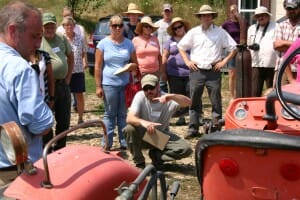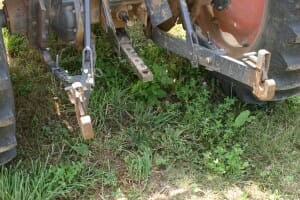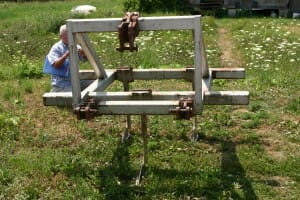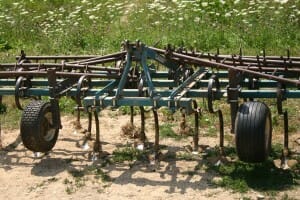Moving stuff around on the Market Farm: Rock Spring Farm’s labor saving and profit maximizing devices with Chris Blanchard – PFI Field Day Report (Part 1 of 3)
Over 100 people attended a recent PFI Field Day at Rock Spring Farm near Decorah, IA on July 15 to learn about how to save labor and improve efficiency on Midwest fruit and vegetable farms. Attendees hailed from five states (MN, WI, IL, IA, and NE) with international visitors from Taiwan and Ecuador. All received full access to Rock Spring Farms methods on equipment and systems to save labor and increase productive capacity.
Kristi Bellmann, of Cuba City, Wisconsin, attended this PFI Field Day. “I wanted to know how to be more efficient by learning from other farmers, their experience solving problems.” Kristi grows fresh produce for the farmers market in Dubuque, Iowa.
“The word capacity comes from the latin word “capacitas” meaning to take or hold – it is not what a farm can do with equipment, it is what can your farm take – this is how we might want think about production and equipment to save labor,” says Chris Blanchard, founder of Rock Spring Farm and Flying Rutabaga Works.
Tractors and Tillage implements
Some farmers, Chris noted, have many different older tractors, one for every different implement they use on their farms, and they leave that tractor with that implement on it all year. Chris recommends this only if the farmer has a love of repairs, and is an expert mechanic. If not, buy a limited number of newer tractors that work really well, and use simple “quick hitch” systems to change quickly between implements with ease. Three-point hitches with hydraulic arms are key for using many of the pieces of equipment that follow.
Various types of soil preparation equipment are essential to produce field-scale fruits and vegetables. Chris recommends different tools for different purposes. To loosen up the soil in the deeper zone, primary tillage, a “keyline” or “yeoman” plow is very useful. With as small a tractor as 45 horsepower (just two-wheel drive), a farmer can pull the three-plow implement through soil at 2-4 miles per hour. This lifts the soil and can help reduce compaction caused by tillage and tractors.
To go over soil and smooth it out, in the medium depth or secondary tillage, Chris uses a simple spring-tine Harrow field cultivator purchased from Market Farm Implement in Frieden, PA. It works well in all but high trash situations.
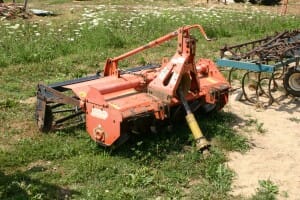
60" rototiller with ganged roller
For shallow, final seedbed preparation, Chris uses a 60” rototiller ganged with a roller to provide precise depth control. Their farm uses a 60” bed system, all tractors and implements are set to this standard spacing. Chris recommends that any farm buying a tiller, purchase the size that is at least 2” wider on both sides than the outside of the tractor tires, not the size of the bed width. This allows for a tractor operator margin of error without missing areas with the equipment, and ensures full coverage of wheel pathways for weed cultivation.
Seeders and seeding equipment
“Some people tell me ‘Our farm is too small to invest in stuff like this,’ I disagree, I say you are never too small to invest in labor saving devices.” – Chris Blanchard
Earthway – a simple inexpensive seeder with a wide variety of plates for various crops.
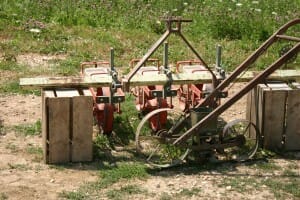
Planet Junior seeders: Orange 3-row in background, Green 1-row in foreground
Planet Junior one-row – the first design of this seeder was from the 1880s – still useful today! Can seed a wide variety of crops with great success.
Planet Junior three-row – Chris recommends a move to the three-row when your business is ready to save time, and more importantly, improve mechanical cultivation accuracy by having more precise distance between rows than pushing a one-row over row markers down the field. Look to spend $250 per row for this seeder. Be sure to buy the Planet Junior seeders that automatically shutoff seed dispensing when you lift up the planter at the end of the row. Buy orange colored Planet Junior® seeders, not the green ones to prevent hassles with manual seed shutoff.
Grant Schultz, field day participant asked about Jang Seeders, made by the Korean firm, Jang Automation Company. Jason Jones, attendee said he has had good luck using his. “My Jang seeder does pretty well for seeding a wide variety of crops.”
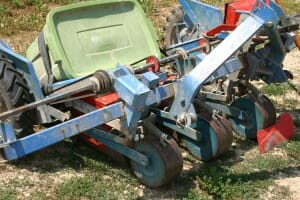
Stanhay belt seeder
“Thinning carrots is a fun thing to do if you aren’t trying to make money. I’d rather my employees be killing weeds than thinning carrots any day.” – Chris Blanchard
With the Stanhay belt seeder, farmers can achieve the uniform sizing required by many wholesale markets. This unit uses a belt with uniform holes in it for precise placement of seeds. Look to spend $1,000 per row for this seeder.
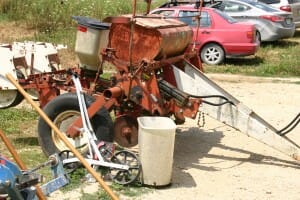
IH 56 corn planter can be used for sweet corn, beans, edamame
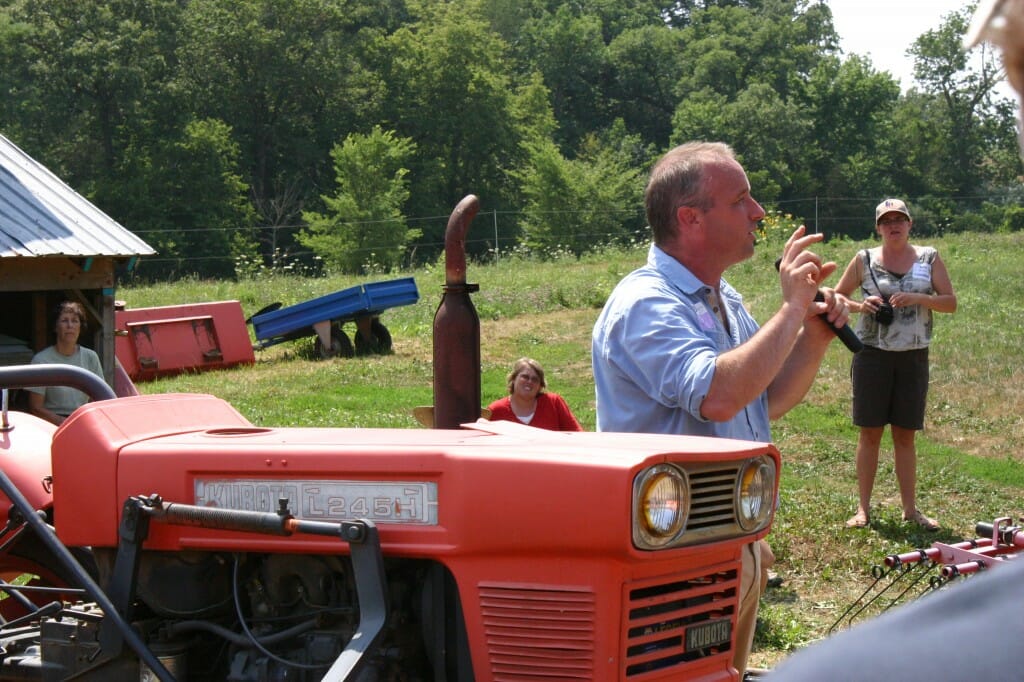
“Every farmer should have a printed catalog from Market Farm Implement on hand, it's a very valuable resource.” - Chris Blanchard http://www.marketfarm.com/ call for a free catalog: (814) 443-1931
This concludes part one of a three-part blog series on Chris Blanchard’s field day in mid-July, 2012. Special thanks to our individual field day sponsors, the Midwest Organic and Sustainable Education Service (MOSES), and the Iowa Organic Association (IOA). Funding provided by the Ceres Foundation

